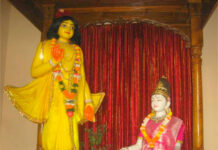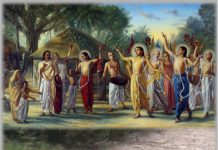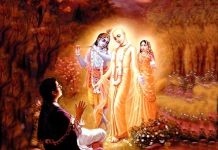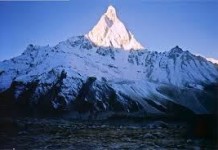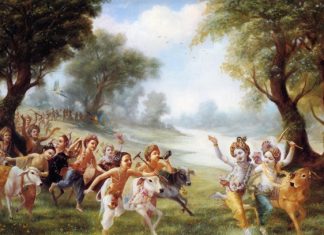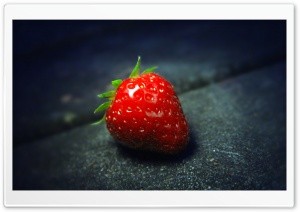 Ayurveda operates on the principle of three constitutional types or doshas: Vata, Pitta, and Kapha. The doshas are further differentiated by their qualities or gunas. Ayurvedic practitioners examine the gunas to determine which components of prakruti are contributing to vikruti. We previously explored the gunas or qualities of Vata. Let’s now examine the qualities of Pitta dosha.
Ayurveda operates on the principle of three constitutional types or doshas: Vata, Pitta, and Kapha. The doshas are further differentiated by their qualities or gunas. Ayurvedic practitioners examine the gunas to determine which components of prakruti are contributing to vikruti. We previously explored the gunas or qualities of Vata. Let’s now examine the qualities of Pitta dosha.
The ancient Ayurvedic text, The Ashtanga Hrydayam, elucidates the qualities of Pitta in this sutra:
Pittam sasneha tikshnoshnam laghu visram, saram dravam
QUALITIES
The first quality of Pitta is oily (sasneha or snigdha in Sanskrit). Oily can manifest as oily skin, oily hair, or acne. Pitta people have a hard time tolerating oily foods and would do best to minimize fatty, fried foods in their diet. Otherwise, they can be prone to issues with their liver or gall bladder due to increased bile production which then does not get properly assimilated in the body. Kutki is an herb which helps improve the function of bile.
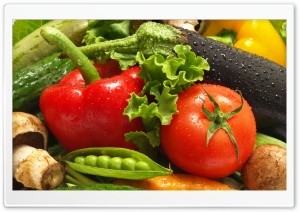 Pitta is also known for being sharp (tikshna). Pitta people are very achievement oriented, intelligent, and critical. They enjoy conversing with fellow smart people. These intellects do not waste their words and converse primarily to learn or convey information. They can be quite direct. Pittas also have tikshna agni which often acts up at noon. Eating sharp foods such as chilies, onions, and garlic also aggravates Pitta dosha, creating hyperacidity. But they love these! Thus the axiom, “like increases like” applies here again. Avipatikar churna is traditionally used to balance acidity in the GI tract.
Pitta is also known for being sharp (tikshna). Pitta people are very achievement oriented, intelligent, and critical. They enjoy conversing with fellow smart people. These intellects do not waste their words and converse primarily to learn or convey information. They can be quite direct. Pittas also have tikshna agni which often acts up at noon. Eating sharp foods such as chilies, onions, and garlic also aggravates Pitta dosha, creating hyperacidity. But they love these! Thus the axiom, “like increases like” applies here again. Avipatikar churna is traditionally used to balance acidity in the GI tract.
Unlike Vata people who feel cold easily, Pitta people tend to run hot (ushna). They do not tolerate heat well and prefer cool climates and settings. Pitta people also can be quite hot tempered and easily lose their cool. When Pitta vikruti manifests, they are also prone to heartburn, inflammation, and ulcers. Eating hot, spicy food and drinking alcohol will increase Pitta dosha
 Another of the qualities of Pitta dosha is light (laghu). This manifests differently than the light quality for Vata dosha. Pittas tend to be very sensitive to bright lights and sunlight. Consequently, they are prone to moles, freckles and melanoma more than either Vata or Kapha people. They are likely to wear glasses and need sunglasses during the daytime. Pitta people have strong appetites and can get hypoglycemic or light headed if they do not eat on time.
Another of the qualities of Pitta dosha is light (laghu). This manifests differently than the light quality for Vata dosha. Pittas tend to be very sensitive to bright lights and sunlight. Consequently, they are prone to moles, freckles and melanoma more than either Vata or Kapha people. They are likely to wear glasses and need sunglasses during the daytime. Pitta people have strong appetites and can get hypoglycemic or light headed if they do not eat on time.
Pitta people are prone to excess sweating and they have a unique strong fleshy smell (visram). Interestingly, they are also often the ones most sensitized to scents and fragrances.
Being achievement oriented, Pitta people enjoy spreading (saram) their name and fame. Pittas are also prone to diseases which spread throughout their body, such as inflammation and hives, rash, or urticaria. Neem oil is commonly use for such conditions.
 The final of the qualities of Pitta is liquid (drava). Pitta people are prone to excess thirst, sweat, and urination. Pitta dosha is comprised of the elements fire and water. Consuming too many liquids around or with meals will impair agni and thus put out the digestive fire. This quality can also manifest in the form of excess stomach acids.
The final of the qualities of Pitta is liquid (drava). Pitta people are prone to excess thirst, sweat, and urination. Pitta dosha is comprised of the elements fire and water. Consuming too many liquids around or with meals will impair agni and thus put out the digestive fire. This quality can also manifest in the form of excess stomach acids.
CAUSES OF IMBALANCE
Pitta vikruti can be caused to poor dietary habits, incompatible food combining, poor lifestyle habits, and a daily routine which imbalances Pitta dosha. Pitta people are in the habit of burning the midnight oil and eating Pitta aggravating foods.
Once the qualities of Pitta dosha get vitiated (Pitta dushti), it requires diligence to bring it back into balance. Since Pitta is sharp and likes to think it is always right, Pitta vikruti people need proper guidance to balance their doshas. To begin balancing Pitta, start by utilizing a tongue cleaner daily after brushing, doing an oil massage with sunflower oil or a Pitta pacifying body oil, and taking supplements to help with Pitta digestive issues. A full Ayurvedic consultation will give you a complete picture of what you need to do to achieve success on the road to health.
(This article was first published at http://vedichealing.com/qualities-of-pitta/)


